#banyarwanda
Explore tagged Tumblr posts
Text
Tutsi et territoire congolais
Depuis quand retrouve-t-on des tutsi sur le territoire du Congo actuel ? Voici la réponse du Copilot à consulter avec précaution, esprit critique. La présence des Tutsis dans l’actuelle République Démocratique du Congo (RDC) remonte à plusieurs décennies [Le nombre de ces décennies n’est pas précisé ici.]. Voici quelques éléments à ce sujet : Origine des Tutsis : Les Tutsis sont un groupe…
0 notes
Text
DISCOVER ELEGANT MUCHANANA TRADITIONAL ATTIRE: THE MOST BEAUTIFUL OF UGANDAN AND RWANDAN TRADITIONAL DRESS
So beautiful is you my Bahimah and Banyankole ladies; so sweet and yummy is you my Banyarwanda Muchanana ladies. For you’re the apple of Ugandan and Rwandan beauty. I will forever love you and always marry you because your beauty deepened in pure undiluted milk assails me relentlessly. Your ladies are the summary of the beauty of the beauteous and so sweet and infectious is there benevolent…
0 notes
Text
From the demise of heroes to the ascent of new kings, myths and legends are as intricate as they are alluring; each society has a unique tale to tell and a unique method of telling it. A legend is based on some truths that are then exaggerated to the point where actual people or events seem "larger than life." A myth, on the other hand, is symbolic storytelling that is not grounded in reality.
The creator Imana, the creator deity in the traditional Banyarwanda and Burundi religions practiced in Rwanda, Burundi, and other related ethnic groups like the Baha in Tanzania and the Banyamulenge in the Democratic Republic of the Congo, was the sole God of the ancient Banyarwanda and Burundi.
Imana, according to their mythology, was the creator and protector of all Banyarwanda and Burundian people. Imana was revered as being all-powerful and kind. In one of the legends, she broke up a fight with a man who routinely avoided paying back debts by borrowing beans from different people.
Imana was the ruler of all living things, and she granted them immortality by slaying the Death Hunter. Death was a ferocious animal that stood in for death. Everyone was instructed to remain hidden while Imana was hunting so that Death would have no one to kill or seek refuge with. But one day, as he was out hunting, an elderly woman snuck into her vegetable garden and took some food. Death scurried under her skirt and followed her into the house.
She passed away due to death. Three days after the old woman's funeral, her hated daughter-in-law noticed cracks where she had been buried as if the old woman would awaken and come to life. She poured dirt into the crevices, pounded the ground with a large pestle, and yelled, "Stay dead!" She repeated the action when she noticed additional grave cracks two days later. Three days later, she could no longer pound dirt into the cracks. This signalled that there would be no more opportunities for men to live again. Death was now endemic or always present. According to a different legend, Imana punished the woman by allowing Death to cohabitate with a man. "Interfering in the normal course of material nature" is not something Imana does.
The Story of Man's Fall
The good Imana is opposed by the dreaded and lethal Ryangombe. This myth relates to the fall of man. Imana made the heavens and the earth when he was all by himself in the beginning. But unlike the heavens, which were a reflection of it, the earth was not the same and was marked by human suffering. But when Imana first created all living things, including people, animals, and plants, they all remained with him in the heavens, and at first, humans coexisted with Imana and consumed Imana's vegetation. And if someone passed away, Imana would revive them in three days. In those early days, humans were mating, life was prosperous, and nobody died. The fall's narrative starts with a woman by the name of Nyinakigwa. She and her husband were childless, which made her sad. She went to Imana and asked him to help her have a child after giving her situation a lot of thought. He listened to her pleas and decided to give her a child. But there was a catch: in exchange for him giving her a child, she was required to keep the child's origin a secret. As a result, Imana gave birth to three children for her: Nyinabatutsi was a daughter, and Kigwa and Lututsi were sons. Nyinakigwa was content right now, and she and her family were all getting along. She did, however, have a sister who shared the same condition and was unable to conceive. She became envious when she learned that her sister was a parent. She begged her sister to tell her where those kids came from and how she could have kids, and she eventually persuaded Nyinakigwa to divulge the kids' ancestry. She then went to Imana to request that he also give her children. Imana was now enraged with him because he had disobeyed.
Knowing she had broken her promise to Imana, Nyinakigwa turned on her kids and killed them. The sky dramatically opened after she had done this and her children had been destroyed, allowing the children to fall to the earth below, where they lived in great hardship and agony. Nyinakigwa was now overcome with sorrow as she realised that her choice had caused her children to live in a place of extreme suffering. The two women ultimately went to Imana and begged for his pardon. Imana thought about their request and agreed that the children would eventually have gone through enough suffering. He then promised that they would return to him in the heavens at that time.
In a different myth, God and a man, one of his creations, had ongoing conversations. Then, one day, God instructed the man that he was not to sleep on a particular night because God would grant him a long life during that time. The man was unaware that a snake had heard what Imana had said. And despite God's warning, the man did fall asleep that fateful night. The snake spoke in the man's place when Imana approached him with his good word and his promise of a new lease on life. Because God mistook the snake for the man, he informed him that he would die but then come back to life and that he would grow old but still shed his skin. All of his descendants would experience the same thing.
The man awoke and kept waiting for God to speak, but nothing happened. Then he turned to God and questioned him about it. Imana realized at that point that the snake had replaced the man. He acknowledged that what had been done was irreversible but noted that men would now kill snakes. However, both the man and his children would pass away. The snake, however, would lose its skin and reappear.
0 notes
Text
NORTH & EAST AFRICAN RESOURCES
The Anthropological Masterlist is HERE.
North Africa is an African region that spans the northern part of the continent. North Africa shares many cultural and linguistic similarities with the Middle East.
BERBER ─ “The Berber, or Amazigh, people are an African people. They are native to North Africa.” ─ Berber Encyclopedia (in French) ─ Amazigh Culture (in French) ─ Berber Dictionary (in French)
GUANCHE ─ “The Guanche people are an African people. They are native to the Canary Islands.” ─ Guanche Information ─ Guanche History
KUSHITE ─ “The Kingdom of Kush was a Northeast African civilization that lived from 1070 B.C.E. to 550 C.E. They lived in modern-day northern Sudan and southern Egypt.” ─ Kushite Information ─ Kerma History ─ Meroitic Language
KABYLE ─ “The Kabyle people are an African people. They are native to northern Algeria.” ─ Kabyle History (in French)
East Africa is an African region that spans the eastern part of the continent. East Africa shares many cultural and linguistic similarities with the Middle East.
BAGANDA ─ “The Baganda, or Ganda, people are an African people. They are native to Buganda in Uganda.” ─ Baganda Culture
BANYARWANDA ─ “The Banyarwanda, or Kingdom of Rwanda, were an African people that lived from the 15th century C.E. to the 20th century C.E. They lived in modern-day Rwanda.” ─ Rwanda in the 20th Century ─ Genocide in Rwanda
DINKA ─ “The Dinka people are an African people. They are native to South Sudan.” ─ Dinka Culture ─ Dinka Language ─ Dinka Language Grammar
ETHIOPIAN ─ “The Ethiopian people are an African people that share the Ethiopian culture. They are native to Ethiopia.” ─ Ethiopian History ─ Afar Language ─ Ethiopian Music
KIPSIGIS ─ “The Kipsigis, or Kipsigiis, people are an African people. They are native to Kenya.” ─ Kipsigis Recordings
LOZI ─ “The Lozi, or Barotse, people are an African people. They are native to Barotseland in western Zambia.” ─ Barotseland Information ─ Lozi Language
LUGBARA ─ “The Lugbara people are an African people. They are native to the West Nile region in Uganda.” ─ Lugbara Culture ─ Sacrifice in Lugbara Culture
MAASAI ─ “The Maasai people are an African people. They are native to Kenya and northern Tanzania.” ─ Maasai Information ─ Maasai Culture ─ Maasai Language
MAKUA ─ “The Makua, or Makhuwa, people are an African people. They are native to northern Mozambique.” ─ Makua Culture
SHONA ─ “The Shona people are an African people. They are native to Zimbabwe.” ─ Shona History ─ Shona Dictionary
SWAHILI ─ “The Swahili, or Waswahili, people are an African people. They are native to the Swahili coast.” ─ Swahili Information ─ Swahili Culture ─ Swahili Dictionaries
VENDA ─ “The Venda people are an African people. They are native to the South African and Zimbabwean border.” ─ Venda Culture ─ Venda Culture
#resources#north african#east african#berber#kabyle#guanche#kushite#baganda#banyarwanda#dinka#ethiopian#kipsigis#lozi#lugbara#maasai#makua#shona#swahili#venda
86 notes
·
View notes
Text
Bafumbira, Banyarwanda and Barundi set to converge for the 5th Iwacu Heza at Hilltop Naguru
Bafumbira, Banyarwanda and Barundi set to converge for the 5th Iwacu Heza at Hilltop Naguru
The annual event that converges all people from Rwandac Kisoro and Burundi called the Iwacu Heza is back foe the 5th time and is set to happen next Sunday on the 27th November 2022 at Hilltop Naguru. Iwacu Heza on previous editions Iwacu Heza is an event that atrracts thousands of revellers including those not from the mentioned regions for the great culture but also for the beautiful people it…

View On WordPress
0 notes
Text
Mulenge-RDC: Manifestation Mulenge appartient aux Bafuliiru
Mulenge-RDC: Manifestation Mulenge appartient aux Bafuliiru
Quelque dix mille Bafuliiru, hommes, femmes et enfants, se sont réunis à Mulenge le 3 septembre 2021 pour dénoncer la tricherie des Banyaruanda. Le village de Mulenge appartient aux Bafuliiru. Et la tribu banyamulenge n’existe pas, ont-ils scandé tout au long de leur marche.

View On WordPress
#bafuliiru#banyamulenge#banyarwanda#conflicts#congo#haut plateaux#kagame#minembwe#mulenge#rdc#rwandais#tshisekedi#uvira
0 notes
Photo

ETHNIES AFRICAINES AYANT DES ORIGINES D'ÉGYPTE ANCIENNE Rwanda - BaNyarwanda (Les gens du Rwanda) ☀️Les BaNyarwanda sont originaires de la vallée du Nil, ils parlent le KiNyarwanda, et adoraient un seul Dieu, Imana. Les baNyarwanda professent que l’Univers entier fut créé par Imana. ☀️La vénération du Créateur bienfaiteur constituait l'un des piliers du Vitalisme Rwandais. 🧚🏿♀️🧚🏿♂️ Comme partout en Afrique, Dieu pour les Rwandais était aussi l’Energie qui fait fonctionner de manière cyclique la création entière.🌀🧿♀️🌀☀️ C’est à partir du nom de Dieu chez les Rwandais que l’on a pu restituer le nom de Dieu chez les Égyptiens anciens. Les Medu Ntjer (Hiéroglyphes) écrivent ce nom "Imn", les Égyptiens n’avaient pas l’habitude de transcrire toutes les voyelles. C’est en mettant "Imn" dans son contexte africain, qu’on a abouti à "Imana". C’est Imana, qui est devenu Amen/Amin dans les traditions judéo-chrétiennes et islamiques, marquant les emprunts inavoués des étrangers à l’Afrique en matière de religion. 😉🧙🏻♂️ En Égypte ancienne, pour devenir un ancêtre bienfaiteur, il fallait prouver dans la salle du jugement dernier que l’on avait obéit aux préceptes de Maât (les lois bienfaitrices), à l'identique, pour les baNyarwanda et comme dans toutes les traditions Africaines, à la mort il y a séparation entre le corps charnel et l’esprit/âme/énergie. Cette partie invisible est appelée Umuzimu. ☀️🌀 Si le défunt a fait le bien de son vivant, est mort en paix avec ses proches et a obéit au Kubandwa (les lois bienfaitrices pour les baNyarwanda), il devient un ancêtre justifié auquel on s’adresse pour requérir protection. 🧙🏿♂️ #rwanda#egypteancienne#valleedunil#banyarwanda#kinyarwanda#spiritualiteafricaine#memoiresafricaines#imana#umuzimu#kubandwa#maat##Ecolekatiopa☀️ @grandeurnoire https://www.instagram.com/p/Bw742xgA6yf/?igshid=7p5ucmacn21p
#rwanda#egypteancienne#valleedunil#banyarwanda#kinyarwanda#spiritualiteafricaine#memoiresafricaines#imana#umuzimu#kubandwa#maat#ecolekatiopa☀️
1 note
·
View note
Photo

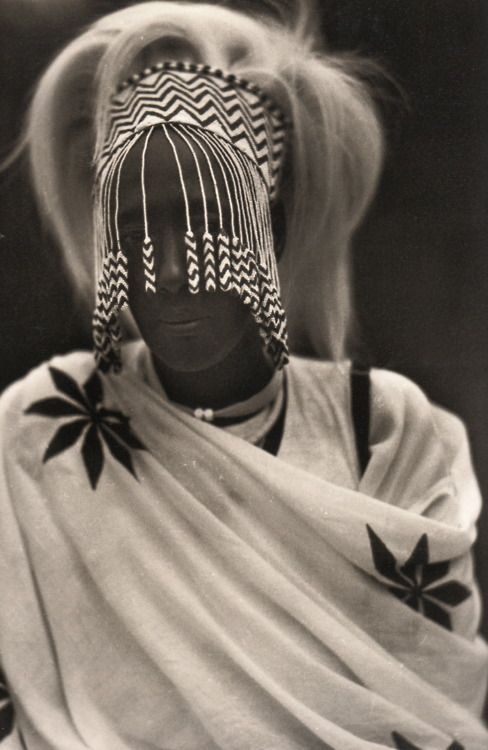


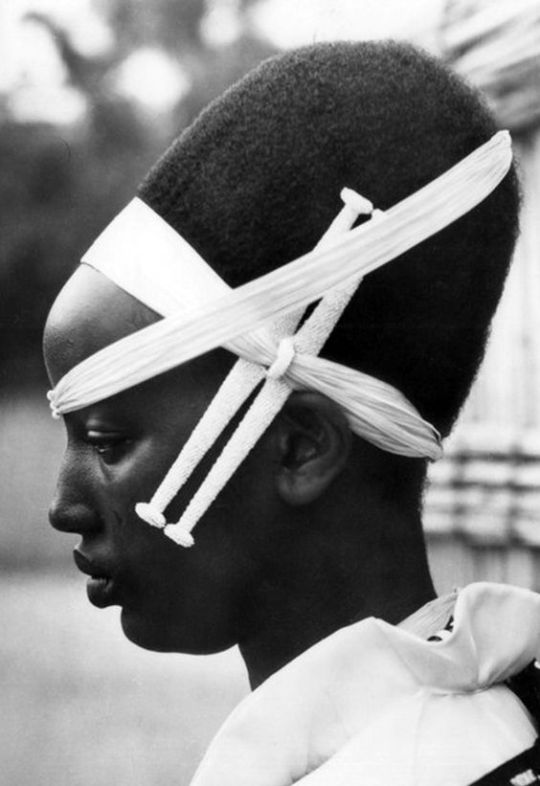


Tutsi people
3. Tutsi hairstyle called amasunzu, 1923 5. Tutsi woman, 1957
The Tutsi (/ˈtʊtsi/; Rwanda-Rundi pronunciation: [ɑ.βɑ.tuː.t͡si]), or Abatutsi, are a Bantu speaking, social class or ethnic group of the African Great Lakes region. Historically, they were often referred to as the Watutsi, Watusi, Wahuma, Wahima or the Wahinda. The Tutsi form a subgroup of the Banyarwanda and the Barundi people, who reside primarily in Rwanda and Burundi, but with significant populations also found in DR Congo, Tanzania and Uganda.
Tutsis are the second largest population division among the three largest groups in Rwanda and Burundi; the other two being the Hutu (largest) and the Twa (smallest). Small numbers of Hema and Kiga people also live near the Tutsi in Rwanda. The Northern Tutsi who reside in Rwanda are called Ruguru (Banyaruguru), while southern Tutsi who live in Burundi are known as Hima, the Banyamulenge who live in mulenge mountains.
#fashion#tutsi#rwanda#rwandan fashion#hairstyles#black hairstyles#headdress#men's fashion#african fashion
512 notes
·
View notes
Text
⭐⭐⭐Deities⭐⭐⭐
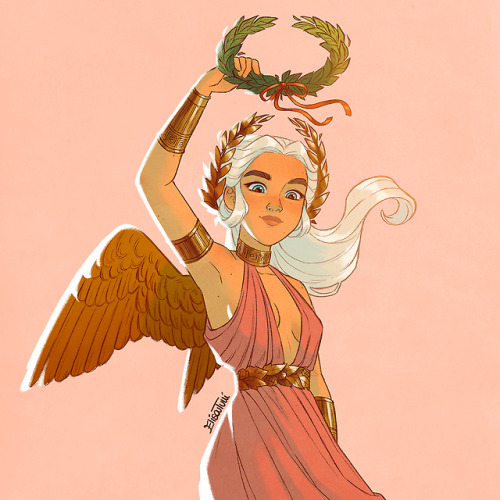
⭐ In Wicca, the deities are gods or goddesses that we follow and worship. There are so many deities that you could follow and many ways that you can choose to see and worship them. There are no right or wrong choices here. It simply depends on what feels right to you- which deities you feel drawn to and also the path that you decide to take as a Witch. ⭐ Do not be put off Wicca because the idea of having a god or goddess doesn’t feel like your thing. Following deities is actually very simple. A lot of Wiccans don’t think of gods and goddesses as actual people, higher beings, someone that once existed or as all-knowing creators of everything. Instead, we view deities as personifications of nature. Each deity represents a different aspect of something that we experience on this earth, including the natural world; there is a god or goddess to represent every single aspect of the earth and all that comes with it. It becomes easier to connect with nature if we see aspects of it in human form, because we find it easier to understand and visualize looking up to, listening to and communicating with people. So, we see deities as just human forms of nature. For example, the Armenian deity Anahit is the goddess of fertility,healing,wisdom, and water, and we think of her as the personification of these elements and powers and the spiritual energies surrounding them. Of course, you can also believe in deities in the traditional way, as supernatural powers that keep whatever they represent and look after in balance; that’s just another way of believing in your deities. ⭐ Some witches might follow a group or pantheon of deities such as the Celtic, Norse or Egyptian gods and goddesses. It’s also a common idea that gods and goddesses from different pantheons represent similar things, so they are actually similar deities that have originated from and developed and adapted in different civilizations and cultures throughout the world. If you believe this train of thought and you are happy to potentially honour all of the deities, depending on which feels right for you at the time, you could be an eclectic witch , or you could just choose one group of deities to work with if you prefer and still follow this belief, but just choose one pantheon that suits you best and you feel drawn to. Some witches only worship one or two deities and others may choose to work with one god or goddess if the pull towards that one deity seems sufficient. Some witches follow the traditional Gardnerian teaching, believing there is only one god and one goddess- the god of the sun and the goddess of the moon. There are so many deities deities that you can follow from different cultures and countries. Don’t worry if it takes you a while to find which gods and goddesses feel right for you. You can worship deities from anywhere in the world, but there are a few common ones that you hear about frequently in Wicca. This doesn’t mean that you have to follow these ones, there are just a few of the options:
(ALSO YOU CAN CHOOSE NOT TO WORK WITH ANY DEITY/GOD OR GODDESS, MAKE YOUR CRAFT YOUR OWN <3 )
~~~~~~~~~~~~~~~~~~~~~~~~~~~~~~~~~~~~~~~~~~~~~~~~~~~~~~~~~~~~~
⭐ ⭐ ⭐
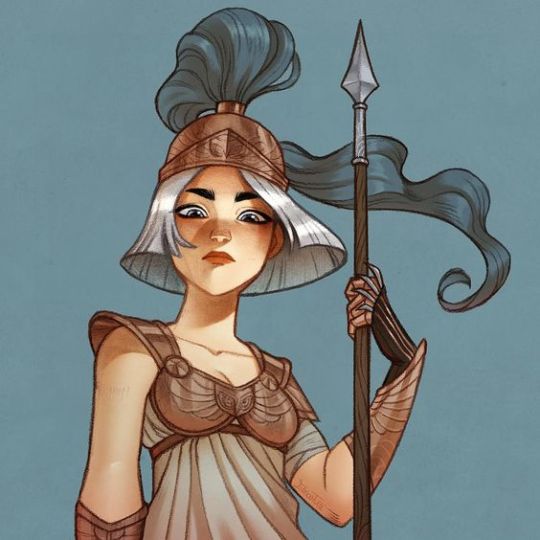
Art By: elisa_tulli on instagram
GREEK:
Apollo- god of music,prophecy, truth, healing, the sun and light
Aphrodite- goddess of love, beauty, eternal youth and fertility
Ares- god of war
Artemis- goddess of the hunt, wild animals, chastity and childbirth
Asteria- goddess of falling stars and night-time prophecies
Athena- goddess of wisdom, strength, crafts and knowledge
Aura- goddess representing a gentle breeze
Demeter- goddess of the harvest
Eos- goddess of the dawn
Eros- god of love
Hecate- goddess of magick, witchcraft, ghosts and the night
Hades- god of the underworld
Helios- god of the sun
Hera- goddess of women, marriage and family
Hermes- god of trade, shepherds, travel and literature,particularly of poets, also the messenger of the gods
Nyx- goddess of the night
Persephone- goddess of the spring and queen of the underworld
Poseidon- god of the sea, earthquakes, floods and horses
Rhea- mother of gods and goddess of motherhood and female fertility
Selene- goddess of the moon
Styx- goddess of the river Styx which divides earth from the underworld
Thea- goddess of sight and divine light
Zeus- the god of the sky and the ruler of the Olympian gods
⭐ ⭐ ⭐
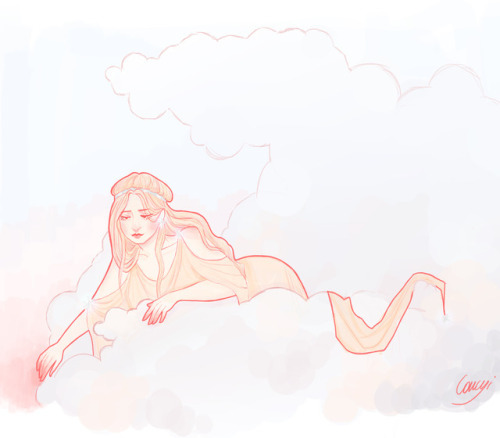
Art By: coucyi on tumblr
ROMAN:
Apollo- god of light, music and healing
Aurora- goddess of the dawn
Bacchus- god of wine, farming and fertility
Ceres- goddess of the harvest and a mother’s love
Cupid- god of love
Diana- goddess of the hunt, nature and the moon
Juno- goddess of love and marriage
Jupiter- god of thunder and sky
Luna- goddess of the moon
Mars- god of war
Minerva- goddess of wisdom, war, commerce, crafts and poetry
Neptune- god of the sea
Pluto- god of the underworld
Proserpine- goddess of the underworld
Sol- god of the sun
Terra- goddess of the earth
Venus- goddess of love
⭐ ⭐ ⭐

Art By: yliade-illustrations
EGYPTIAN:
Amun- god of the sun, the air and life
Anubis- god of the dead
Bast- goddess of protection, cats and of the home
Bes- god of war, but also of the home
Hapi- god of water and fertility who brought the annual flooding to the Nile
Hathor- goddess of joy,love,motherhood,beauty and fertility
Horus- protector of Egypt
Isis- goddess of fertility and empowerment
Khensu- god of the moon
Maat- goddess of truth,justice,stability and harmony
Min- god of fertility and male sexuality
Mut- goddess, mother figure
Neith- goddess of war
Nut- goddess of the sky and the heavens
Osiris- god of the afterlife
Ptah- god of craftsmen and creation
Ra- god of the sun
Sekhmet- goddess of destruction,war and healing
Set- god of disorder, storms and war
Shu- god of dry air and the earth’s atmosphere
Taweret- goddess of childbirth
Tefnut- goddess of water, moisture and rain
Thoth- god of writing, science, magick and the moon
⭐ ⭐ ⭐
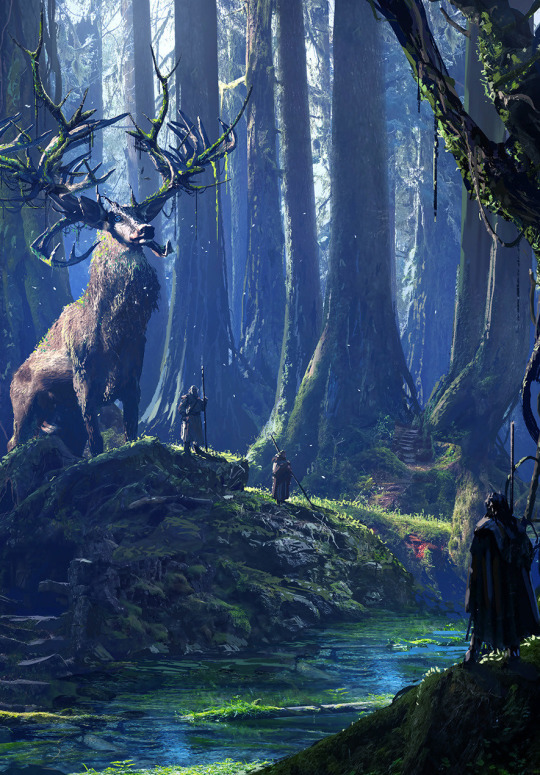
Art By: by Raphael Lacoste
CELTIC:
Aine Of Knockainey- goddess of love, crops, and farms
Airmid- goddess of medicinal plants and regeneration
Amaethon- god of agriculture and luck
Andraste- goddess of the moon and divination
Angus Og- god of youth, beauty and love
Anu- goddess of the moon,fertility,prosperity and comfort
Arawn- god of the underworld,revenge,war and terror
Artio- goddess of animals and fertility
Bel- god of representing sun and fire
Bendigeidfran- god of the arts,music,writing and prophecy
Branwen- goddess of love and beauty
Bres- god of the agriculture and fertility
Brigit/Brigid- goddess of fire,sun,hearth,fertility,crafts,inspiration, home and divination
Cailleach- goddess of the winter months
Ceridwen- goddess of poetic inspiration
Cernunnos- the horned god of nature, the underworld,wealth and physical love and masculine energy
The Dagda- god of protection,weather and knowledge and the father god of Ireland
Danu- goddess of water,wizards,magick and wisdom
Latobius- god of mountains and sky
Lugh- god of craftsmanship and light
Manannan- god of the sea
Maponus- god of music and poetry
Morrigan- goddess of war
Nuada- god of war
Rhiannon- goddess of horses
Taliesin- god of poets
Taranis- god of thunder and the wheel
⭐ ⭐ ⭐
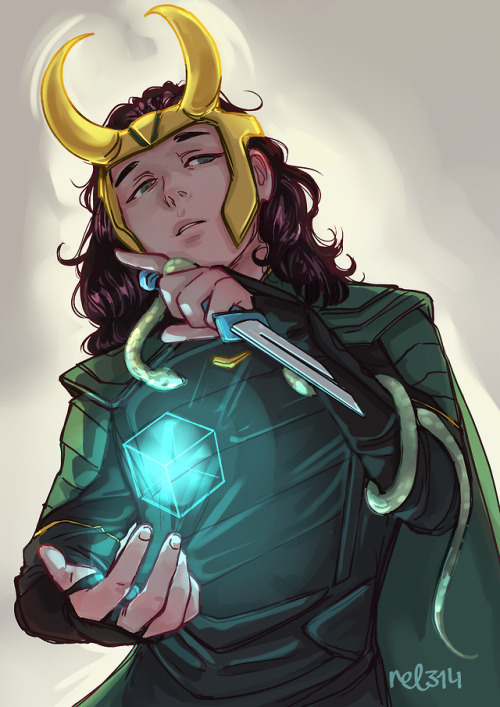
Art By: nel314
NORSE:
Aegir- god of the sea
Balder- a gentle,pure and wise god
Bragi- god of poetry and eloquence
Eir- goddess of healing
Forseti- god of justice
Freyja- goddess of fertility, beauty and war
Frigg- goddess of love, fertility and motherhood
Gefion- goddess of fertility
Heimdall- god of light
Hel- ruler of the underworld
Lofn- goddess of marriages
Loki- the trickster of the Norse gods
Njord- god of the wind and sea
Odin- King of the Norse gods; god of poetry,war,death and wisdom
Sif- goddess of fertility
Sjofn- goddess of passion
Skadi- goddess of winter, the hunt and mountains
Thor- god of thunder
Ullr- god of archery and skiing
Var- goddess of marriage oaths
Vor-goddess who knows everything
⭐ ⭐ ⭐
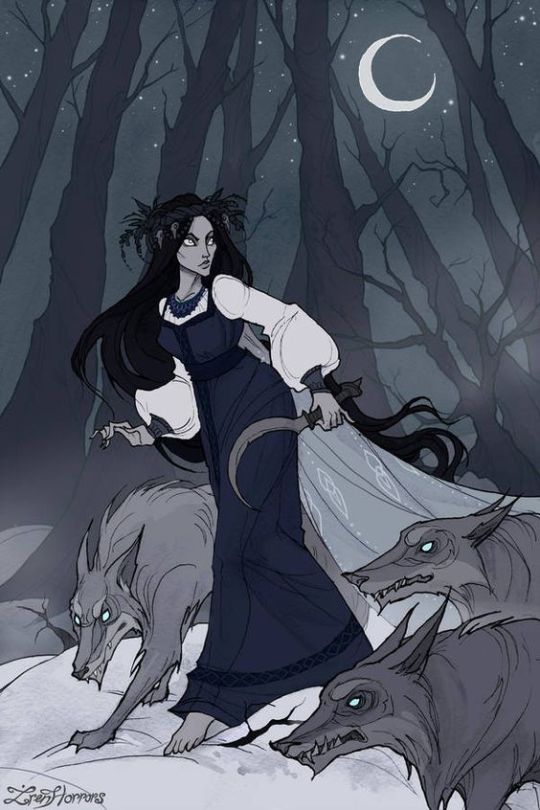
Art By:IrenHorrors
SLAVIC:
Dazbog- god of the sun
Jarilo- god of war,spring,fertility and harvest
Lada- goddess of love,marriage,summer,beauty and fertility
Morana- goddess of harvest,winter,death and witchcraft
Perun- god of thunder and lightning
Rod- the supreme god
Svarog- god of fire
Svetovid- god of war and fertility
Triglav- god of war
Veles- god of earth,forests,waters and the underworld
Vesna- goddess of spring,love and youth
Zaria- goddess of beauty
Ziva- goddess of love and fertility
⭐ ⭐ ⭐
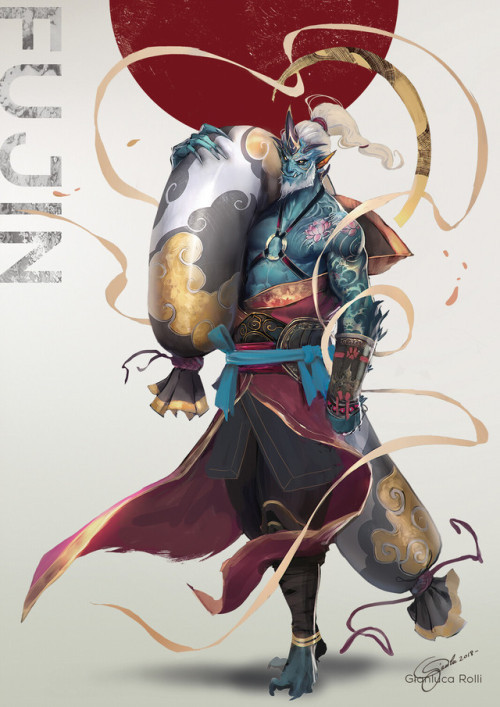
Art By: meninfantasyart
JAPANESE:
Amaterasu- goddess of the sun and the universe
Benzaiten- goddess of literature, music, love and wealth
Ebisu- god of fisherman,luck,prosperity and crops
Fujin- god of the wind
Inari- goddess of prosperity,fertility,rice,tea,sake,agriculture and industry
Jizo- the guardian of children, childbirth,women and travelers
Kannon- goddess of mercy
Raijin- god of lightening, storms and thunder
⭐ ⭐ ⭐
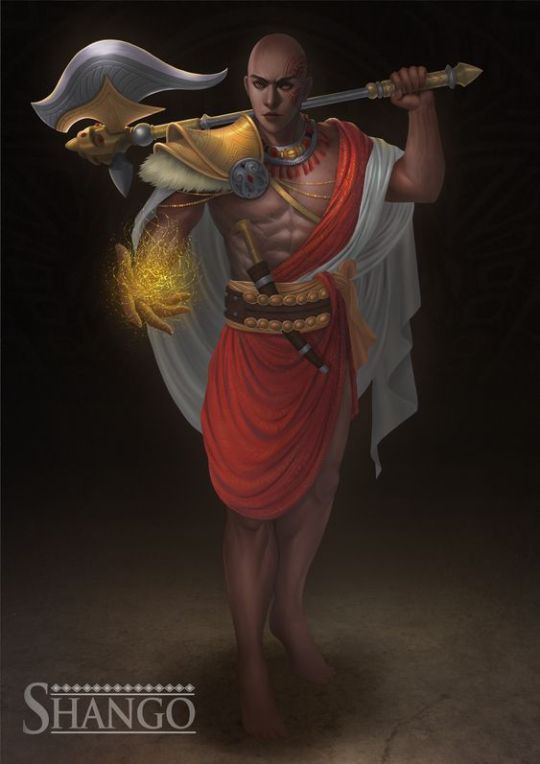
Art source: ArtStation.com WeiSiem Lee
AFRICAN:
Anayaroli- god of harvest and wealth (the Temne of Sierra Leone)
Asa- god of protection and mercy (the Kamba of Kenya)
Asase Yaa- goddess of fertility (the Ashanti of West Africa)
Chiuta- god of rain (the Tumbuka in Malawi)
Inanna- goddess of sky,war and love (the Banyarwanda)
Jok- god of rain (Zaire and Uganda)
Mungo- god of rain (Giriama of Kenya)
Ngami- goddess of the moon
Ochumare- goddess of rainbows (the Yoruba)
Ogun- god of war and iron (the Nago and the Yoruba)
Olorun- creator god (the Yoruba)
Oshun- the goddess of love and fertility (the Yoruba)
Oya- goddess of storms (the Yoruba)
Rock-Sens- god of weather (the Serer of Gambia)
Ruhanga- creator god and god of fertility,disease and death (the Banyoro of Uganda)
Shango- god of thunder,war and magick (the Yoruba)
Yemaya- goddess of the seas and rivers (the Yoruba)
Yemoja- goddess of the river,women and children (the Yoruba)
⭐ ⭐ ⭐
-Source: Wicca By Harmony Nice
#witchcraft#witch#wicca#wiccan#witchy#witchy thoughts#witchy tips#beginner witch#gods#goddess#mythology#paganism#pagan#pagan wicca#magick#witchblr#spells#love#healing#heart#witches#deities#deity#modernwitch
1K notes
·
View notes
Text
Diyasipora Irikoma RNC Na Himbara Bashaka Kuyisenya N’ubwo Batabigeraho
Abanyarwanda bo muri Diyasipora baturutse mu bihugu bitandukanye bavuze ko ishyaka RNC [ntiryemewe n’amategeko] ritavuga rumwe na Leta y’u Rwanda na David Himbara wahunze igihugu, bafite umugambi wo gusenya iri huriro ryabo rya Diyasipora ariko ko batazabigeraho.
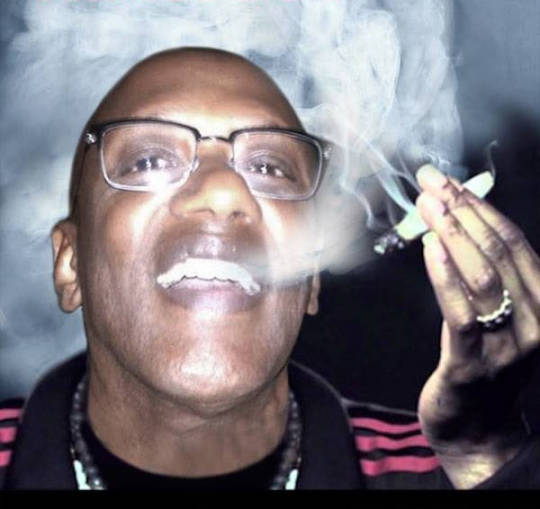
Iri shyaka RNC riyobowe na bamwe mu bahoze mu nzego nkuru za Leta y’u Rwanda bakaza guhunga igihugu kubera bimwe mu byaha bakoze, ndetse na David Himbara wigeze kuba umujyanama wa Perezida Kagame Paul, bakunze kunenga iterambere ry’u Rwanda.
Abanyarwanda baba muri Diyasipora bamaze iminsi mu Rwanda bari baje mu nama y’igihugu y’Umushyikirano, ejo hashize baganiriye na Minisiteri y’Ububanyi n’amahanga bayigaragariza bimwe mu bibazo by’ingutu bari guhura na byo.
Bagarutse cyane kuri ririya shyaka na David Himbara bafite umugambi mubisha wo gushaka kubaryanisha no kubinjizamo amatwara mabi yo kwanga igihugu cyabibarutse.
Umwe muri aba banyarwanda uba muri Canada yagaragaje bimwe mu bikorwa bya David Himbara.
Ati “Umwaka ushize umuntu uwitwa Himabara yaduteye avuga ko dukorana n’inzego z’ubutasi bw’u Rwanda, ngo hari abafande baza kutwigisha kwica, ibintu byinshi cyane…”
Yavuze ko ibi batabyihereranye ahubwo ko bahise babibwira abayobozi babo kugira ngo ariya matwara ye adakomeza kuyacengeza mu bana b’u Rwanda.
Ati “Twebwe ubwacu dushobora kwirinda ariko dukeneye amaboko yanyu bayobozi bacu kugira ngo dushyiremo imbaraga nka Diyasipora.”
Uyu munyarwanda wagaragaje imigambi mibisha bariya bantu bafitiye u Rwanda, yavuze ko abanyarwanda bagera ku ikenda (9) bamaze kwicwa bazira ko bakunda igihugu cyabo kandi bakigenderera.
Ati “Uyu mwaka utararangira, twashyinguye umuyobozi wacu muri Mozambique , none ndabaza nti ‘twakora dute kugira ngo iryo hohotera rigabanuke muri twebwe?’, cyane cyane abantu baza ino bafite ibikorwa ino mu Rwanda.”
Yavuze ko abantu bitabira umushyikirano, Rwanda day n’abandi bakunda kugaragara mu bikorwa byo gushyigikira igihugu cyabo bakunze guterwa ubwoba n’abanzi b’igihugu. Ati “None ni iki mwadufasha mwebwe abo muri Minisiteri kugira ngo dutekane?”
Aba baba muri Diyasipora nyarwanda bafatwa nk’abagize intara ya Gatandatu y’u Rwanda, banagarutse ku bikorwa byo gupfobya Jenoside bikunze kuranga bari batavuga rumwe n’ubutegetsi bw’u Rwanda.
Umwe muri aba bo muri Diyasipora yavuze ko bibabaje kuba nta muntu upfobya Jenoside yakorewe Abayawudi, ariko habakaba hari abirirwa bahakana Jenoside yakorewe Abatutsi.
Ati “Twakora iki kugira ngo uzapfobya Jenoside yakorewe abacu azabihanirwe bikwiye?”
Umuyobozi wa Diyaspora nyarwanda, Sandrine Uwimbabazi Maziyateke yavuze ko bagiye gukorana na za Ambasade zitandukanye z’u Rwanda kugira ngo bahanahane amakuru ya nyayo bityo n’abakora ibikorwa nk’ibi babiryozwe.
Avuga ko bagiye guhagurukira gukoresha imbuga nkoranyambaga mu kunyomoza bariya bantu kuko na bo bakunze kuzikoresha.
Umunyamabanga wa Leta muri Minisiteri y’Ububanyi n’Amahanga, Amb. Nduhungirehe Olivier yavuze ko nubwo hari abanyarwanda bo muri diyasipora bagiye bagirirwa nabi ariko ko biri kugenda bicogora babikesha kwishyira hamwe.
Ati “Ni ngombwa ko Abanyarwanda batekereza kwishyira hamwe kugira ngo Guverinoma z’ibyo bihugu Abanyarwanda bari zigire aho zihagarara, kugira ngo iyo babonye Abanyarwanda bahohotewe maze hakagira igikorwa.”
Amb. Nduhungirehe kandi yavuze ko aba banyarwanda bari hanze badakwiye gucika intege kubera ibikorwa bya bariya bantu ahubwo ko bakwiye guhaguruka bakaba abavugizi b’igihugu cyabo kugira ngo abanenga u Rwanda baburizwemo.
Minisitiri w’ububanyi n’Amahanga, Dr Vincent Biruta wagarutse ku bikorwa byo gupfobya Jenoside yakorewe Abatutsi, yavuze ko guhangana na bo bikwiye kuba urugamba rwa buri wese kandi agakoresha uburyo bwose bushoboka kugira ngo ukuri gukomeze kugaragara.
Ati “Yaba muri Social media, kandi nta n’ubwo biba bikomeye kuko bariya bantu nta mbaraga baba bafite.”
Mu myanzuro y’Inama y’Igihugu y’Umushyikirano, harimo ugaruka ku ruhare rw’abanyarwanda bo muri Diyasipora, ko bagomba gushakirwa uburyo bakomeza kugira uruhare mu iterambere ry’igihugu.
1 note
·
View note
Text
DRC:Hateguwe ibarura rigamije kumenya umubare w’Abanyekongo bavuga Ikinyarwanda
DRC:Hateguwe ibarura rigamije kumenya umubare w’Abanyekongo bavuga Ikinyarwanda
Muri Repuburika Iharanira Demokaras ya Congo, ibikorwa n’imvugo z’u Rwango ku Banyarwanda n’Abakongomani bavuga Ikinyarwanda birarushaho gukomera no gutafa indi sura . Ubu gahunda igezweho, ngo n’ibararu rusange ry’ Abanyekongo riri hafi gukorwa, ariko ngo ikigamijwe akaba ari uguhiga no kubasha kuvumbura Abanyarwanda n’abandi ngo biyitirira Abanyekongo kandi ataribo. Abavugwa ko biyitirira…
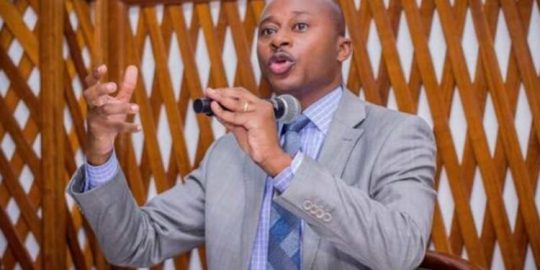
View On WordPress
0 notes
Text
Niger yahaye iminsi 7 Abanyarwanda 8 bari boherejwe yo bavuye Arusha kuba bahavuye
Niger yahaye iminsi 7 Abanyarwanda 8 bari boherejwe yo bavuye Arusha kuba bahavuye
Abanyarwanda 8 barangije ibihano bari barahawe kubera uruhare muri jenoside n’abagizwe abere birukanwe mu gihugu cya Niger Loni yari yaboherejemo bavuye I Arusha muri Tanzania. Minisitiri Hamadou Adamou Souley w’ubutegetsi bw’igihugu no kwegereza abaturage ubuyobozi muri Niger, yahaye aba Banyarwanda iminsi irindwi yo kuba bavuye ku butaka bwa Niger nk’uko bigaragara mu itangazo yasohoye. Ni…

View On WordPress
0 notes
Text
MBEREKE UKUNTU P. KAGAME ARI IGITOTSI MUMIBANIRE N'IMIBEREHO BYA BANYARWANDA KUBURYO KIDATOKOWE KIZABABYARIRA AMAZI NKIBISUSA:
MBEREKE UKUNTU P. KAGAME ARI IGITOTSI MUMIBANIRE N’IMIBEREHO BYA BANYARWANDA KUBURYO KIDATOKOWE KIZABABYARIRA AMAZI NKIBISUSA:
View On WordPress
0 notes
Text
UNHCR lauds Kenya’s decision to resolve stateless status of communities – PML Daily
UNHCR lauds Kenya’s decision to resolve stateless status of communities – PML Daily

President Uhuru Kenyatta (PHOTO/Courtesy).NAIROBI — The UN refugee agency on Saturday welcomed Kenya’s decision to recognize and register stateless Shona and stateless persons of Rwandan descent (Banyarwanda) who qualify under the law as Kenyan citizens. President Uhuru Kenyatta announced the landmark decision during celebrations marking Kenya’s 57th Independence…
View On WordPress
0 notes
Text
Bölgelere göre mitoloji


Afrika
Akamba mitolojisi – Akan mitolojisi – Alur mitolojisi – Aşanti mitolojisi – Baluba mitolojisi – Bambara mitolojisi – Bambuti mitolojisi – Banyarwanda mitolojisi – Basari mitolojisi – Baule mitolojisi – Bavenda mitolojisi – Bazambi mitolojisi – Baziba mitolojisi – Buşongo mitolojisi – Dahomey mitolojisi (Fon) – Dinka mitolojisi – Dogon mitolojisi – Efik mitolojisi – Mısır mitolojisi…
View On WordPress
0 notes
Link

Uganda – the pearl of Africa, Winston Churchill was the one to give credit to Uganda as Pearl of Africa because of its magnificence, variety of form and colour, profusion of brilliant life, bird, insect, reptile, and beast in large scale. Almost over 80% of Ugandan people live in rural areas and directly serve off the environment and natural resources. The Bantu speaking people migrated to the area from central and western Africa long ago. They brought political and social ideas with their iron works and Now Uganda safari is a dream of all peoples of world
The cultural diversity of Uganda has produced a wide variety of lifestyle and interest among Ugandans. The south of Uganda has the Ganda culture and north has Acholi and Lango culture. Uganda possesses a rich tradition of theatre, ranging from the active National Theatre in Kampala to hundreds of small, local theatrical group.
The Ethnic groups are; Baganda, Bahima, Bakiga, Banyarwanda, Bunyoro, Batoro, Langi, Acholi, Lugbara, Bagisu and others. The Baganda are the largest ethnic group in Uganda and comprise approximately 17% of population.
The languages spoken in Uganda are; English and Swahili as official language and numerous other local languages.
History of Uganda:

Beginning in 100AD, Nilotic people, including the Ateker and Luo came into Uganda from the North. Some of the Luo invaded the Bunyoro areas and assimilated with the Bantu. This gave live to the Babiito dynasty. This Luo migration ended in the 16th century. The Ateker settled in other areas of Uganda and some combined with Luo north of Lake Kyoga.
The arab traders moved from the East African coast and were followed by British explorers looking for the Nile’s source. Protestant and Catholic missionaries followed later in the century and made it British East India Company. For more information click here
Geography:
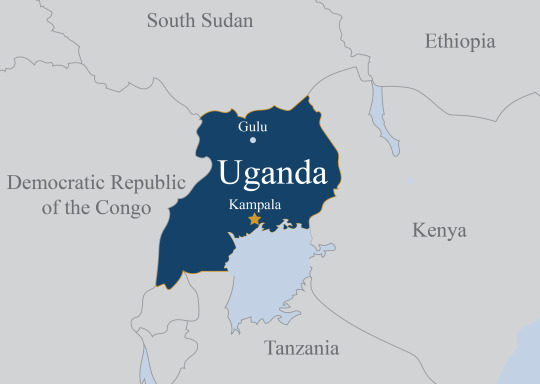
Uganda has an average height of 1,100 metres above the sea level and it is on the East African plateau. Lake Kyoga dominates the country’s centre. Uganda is almost all within the Nile Basin. The Victoria Nile drains from Lake Victoria to Lake Kyoga and then runs to Sudan. The turkwel River drains in Ugandas eastern edge.
The climate in Uganda is equatorial and not uniform. The southern areas are wetter and northern part of Uganda is dry sometimes.
Economy:

The poor economic policies and instability caused the economy to suffer for decades. This left Uganda as one of the poorest countries in the world.
Bank of Uganda is the central Bank of Republic of Uganda and the primary purpose of the bank is to foster price stability and a sound financial system.
The ministry of Finance planning and Economic development derives its mandate and functions from constitution of Republic of Uganda and other related subordinate laws, including; the Budget Act, the public Finance and Accountability act.
The official currency of Uganda is Ugandan Shilling [Ush]. The Ugandan shilling is now a stable currency and predominates in most financial transactions in Uganda.
Cities:

Uganda has total of 65 cities with its own culture and heritage. Uganda has 1 city with more than a million people, 2 cities with between 1,000,000 and 1 million people, the other 62 cities has the population ranging between 10,000 and 1,00,000 people. The largest city is Kampala and it is the capital of Uganda.
The capital city Kampala is situated in countries most prosperous agricultural section, Kampala exports coffee, cotton, tea, tobacco and Sugar. The city has numerous food, metal-products and furniture enterprises and tractor assembly plant.
The other major cities include; Nansana, Kira, Makindye, Mbarara, Gulu and others.
People: Ethnic group:

Belonging to many ethnic groups, Ugandans speak over 30 different African languages, English and Swahili are the countries official languages. The largest group is the Baganda and they speak Luganda.
Most people produce their own food and eat two meals a day, lunch and supper. Breakfast is often a cup of tea and porridge. Meals are prepared by women and girls. Men and boys above age 12 do not sit in the kitchen.
The main ethnic groups are; Baganda, Bahima, Bakiga, Banyarwanda, Bunyoro, Batoro, Langi, Acholi, Lugbara, Bagisu and others. The Baganda are the largest ethnic group in Uganda and comprise approximately 17% of population.
The Religions are Muslim, Christian and others.
Languages spoken are English and Swahili as official language. Luganda and other local languages are also major within the groups.
Food:

The traditional food in Uganda includes Ugali which is served with a stew of groundnuts, beans, chicken or meat such as beef, goat or mutton. Game can be found in Menus of some restaurants and at Safari lodges. Fish including the tiger fish, Mukini, mputa, and tilapia are also popular.
The most of tribes in Uganda have their own speciality dish. The Uganda cuisine consists of traditional and modern cooking styles, practices, foods and dishes in Uganda. They also have English, Arbian and Asian influences. Many of the dishes include various vegetables, potatoes, yams, bananas and other tropical fruits.
Language:
Uganda’s official language is English, which is spoken by most of the educated Ugandans. The three major indigenous language families are Bantu, Central Sudanic, and Nilotic. The main language widely spoken is Swahili and Luganda.
Luganda is widely spoken local language and this is predominantly spoken by the Baganda people in the Urban areas of Kampala. Swahili was approved as Ugandas 2nd official language.
Religion:
Christianity is widespread in Uganda. Nearly one third of the population follows traditional religions. There are also some Muslim sects, small community of Ugandan Jews and 0.7% of Uganda’s population is classified as ‘Other-Non Christians’, including Hindus. Uganda has the largest minority religion.
Tourism in Uganda:
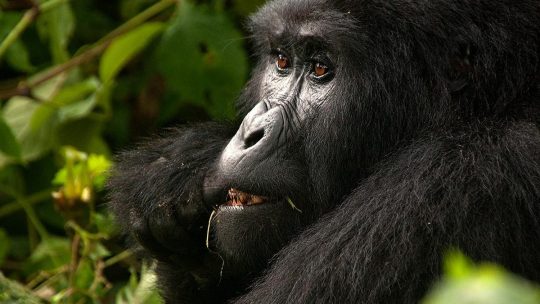
Wondering why it is called “The Pearl of Africa”? You can see Lions prowling across the savannah as day breaks before white water rafting down the Nile; then the next day set off into the misty mountains in search of majestic mountain gorillas before settling in to watch a local cultural evening around the camp fire.
The main attraction is Gorilla trekking in Volcanoes National Park and respective genocide memorial monuments. The Uganda gorilla safari experience is worth going and affordable too. The Uganda Safari offers some great safari experiences, such as; Primate Safari experience, wildlife viewing encounters and long or short excursions according to your preferences.
Here is a list of few National parks you can visit while in a Uganda safari:
ü Murchison falls national park:
You can visit Uganda’s biggest National park, the Murchison falls cover approximately 3,800km. The Murchison falls is formed when Victoria Nile forces its way through a narrow cliff.
Bwindi impenetrable national park:

This is the main habitant area for Mountain gorillas in the wild. The largest population of primates is found in Bwindi impenetrable national park. The Uganda Safari offers one of these tours to experience the social primates.
Kibale Forest:
The Kibale Forest National Park is in the western park of Uganda. This lush green park covers around 750kms and the forest has both Montana and Low land with Queen Elizabeth National Park.
Mount Elgon National Park:
The park is located at the border between Uganda and Kenya. Mount Elgon National Park is one of the largest volcano caldera in the world and second highest mountain in Uganda.
Semuliki Valley National Park:
The Semuliki National Park is in between the steaming jungle of Africa region and East Africa. The park offers a lot including the visit to Hot springs, Birding, Sceneries, Primates, Wildlife and many more.
Lake Mburo National Park:
The Lake Mburo is located in western region of Uganda. The park has variety of animals such as zebra, Impala and others. This area is considered as Lion conservation area since 2005.
Queen Elizabeth National Park:

Queen Elizabeth national park is Uganda’s most famous National Park ,offers best of Uganda safari and most of travellers destination. The presence of varied with beautiful lakes, extensive savannah, the natural forests and fertile swamps attracts travellers around the world. It is the best place for big games, primate spices including chimpanzees and more than 500 species of birds.
Kidepo Valley National Park:
The Kidepo valley National Park is situated in the wilderness region of Uganda and it is the most isolated National Park in Uganda but still one of the best places every wildlife viewer can visit. It is a true gem with huge abundance of wildlife.
Rwenzori Mountain National Park:
The Rwenzori Mountain National Park is the ultimate trekking spot for adventure lovers. It has unique and outstanding biggest glaciers in Africa. The mountain is located in Kasese, Uganda and one of the free standing, snow covered, clock mountain. Read more
Mgahinga Gorilla National Park:
The Mgahinga Gorilla National Park is the icon of Uganda’s National Park seated high in the clouds. It has a majestic Natural beauty and attracts tourists every year. The park is home to three Vrunga volcanoes, abundant wildlife and awe-inspiring caves. The Uganda Safari offers Mountain gorilla trekking here and it is a great experience.
The other main attractions offered by Uganda Safari include;
Source of the Nile – The longest river in the world River Nile starts its source from Jinja Uganda, the name Nile means valley in Greek. The main activities done here are Water rafting, bungee jumping, Kayaking, boat rides and fishing.
Ssese Island – The Ssese Islands are an archipelago of 84 Island in the North Eastern part of Lake Victoria in Uganda. The Ssese Islands are inhabited by Bantu speaking Bassesse tribe.
Kasubi Tomb – The Kasubi Tomb is situated on a hill within Kampala. It is an active religious place in the Buganda kingdom. It was the place for burial ground of previous four kabakas.
Lake Bunyonyi – Lake Bunyonyi is located in the south western Uganda between Kisoro and Kabale, it is close to the border with Rwanda. It is the place to watch many little birds.
Ziwa Rhino Sanctuary – Ziwa Rhino Sanctuary is a private, non-profit animal sanctuary in Uganda. It is located north of Kampala. The Ziwa Rhino Sanctuary is collaboratively run by Uganda wildlife authority, the Rhino Fund Uganda, a Ugandan NGO and Ziwa Ranchers limited.
Ngamba Island Chimpanzee sanctuary – Ngamba Island is home for 49 orphaned and confiscated chimpanzees rescued from illegal pet and bush meat trade. Ngamba Island is a part of the Koome group of Islands located in Lake Victoria.
Mengo Palace: The Mengo Palace is the former home of King Buganda. Mengo is bordered by Old Kampala to the north. Mengo Hill has played an important role in Ugandan political and religious history.
Equator Line: The Equator line in Uganda is found along the Masaka – Mbarara highway at what has become a small town called Kayabwe. The people go here to witness equator experiment and take photos.
Uganda martyrs shrine Namugongo:
The Uganda Martyrs Shrine Namugongo is one of the largest Christian pilgrimage destinations in Africa dedicated to the 22 Martyrs and saints of Uganda who were Martyred.
Budongo Forest:
The Budongo Forest in Uganda is northwest of the capital city of Kampala. It is located on the escarpment northeast of Lake Albert. An exceptionally large Mahaogany tree is still found here. It is the home to population of chimpanzees.
Mabira forest:
The Mabira is a rainforest area covering about 300 square kilometres in Uganda. It has been protected as Mabira forest reserve since 1932. It is Uganda’s one of the largest surviving Natural forest.
Sezibwa falls:
The Sezibwa falls are located along the Kampala – Jinja highway. It is Uganda’s hidden cultural treasures with one part owned by Buganda kingdom and other by Anglican Church of Uganda. You can include this tour in your Uganda Safari, like Gorilla Safari, wildlife Safari, Birding Safari etc...
Kisiizi falls:
The Kisiizi Falls is situated in the Rukungiri District in SW Uganda in the Kigezi highlands. It is on the Kyabamba River. You can do bird watching, Forest walks and community experiences which are the main attractions of Uganda Safari.
Sipi Falls:
Sipi Fall is located in the East of Uganda. This falls is found on the foothills of Mountain Elgon just at the edge of Mount Elgon National Park. The name Sipi was derived from the word ‘sep’ which is name of a wild banana like indigenous plant that grows along the banks of Sipi River. The Sipi falls has 3 waterfalls each from a different altitude.
Wamala tombs:
Walama Tomb is situated on a hill with an exceptional panoramic view, Wamala tomb is the place where one of the greatest ancient king of Buganda, Kabaka sunna 2 was laid to rest. This is situated at Wamunyenye in Kyadondo County of the Buganda region along the Kamapala – Hoima highway.
The Bahai temple:
The Bahai temple is situated in one of the suburbs of Kampala city. It is famously known for being a spiritual home for the Bahai Faith in Uganda. The construction of Bahai temple in Kampala was an effort of more than one country; Belgium brought the roof tiles, Germany brought the colored glass, the windows were imported from Britain and Uganda was responsible for the timber and hard rock’s to put up this phenomenal temple.
Lake Victoria:
The source of the famous River Nile, Lake Victoria is located East in Africa. The lake rests between three countries namely Kenya, Uganda and Tanzania. Lake Victoria covers approximately 68,800 kms squared. Scattered along the shore of Lake Victoria there are approximately 84 scheduled clusters of island known as Ssese Island.
Uganda is also known for its Uganda Safari to watch Mountain Gorillas which are a few left primates in the world right now. You can also witness the chimpanzees and other primates. The best part is that you will be allowed inside the National Park to witness the remaining half of Mountain gorillas who is now at the road of extinction.
0 notes